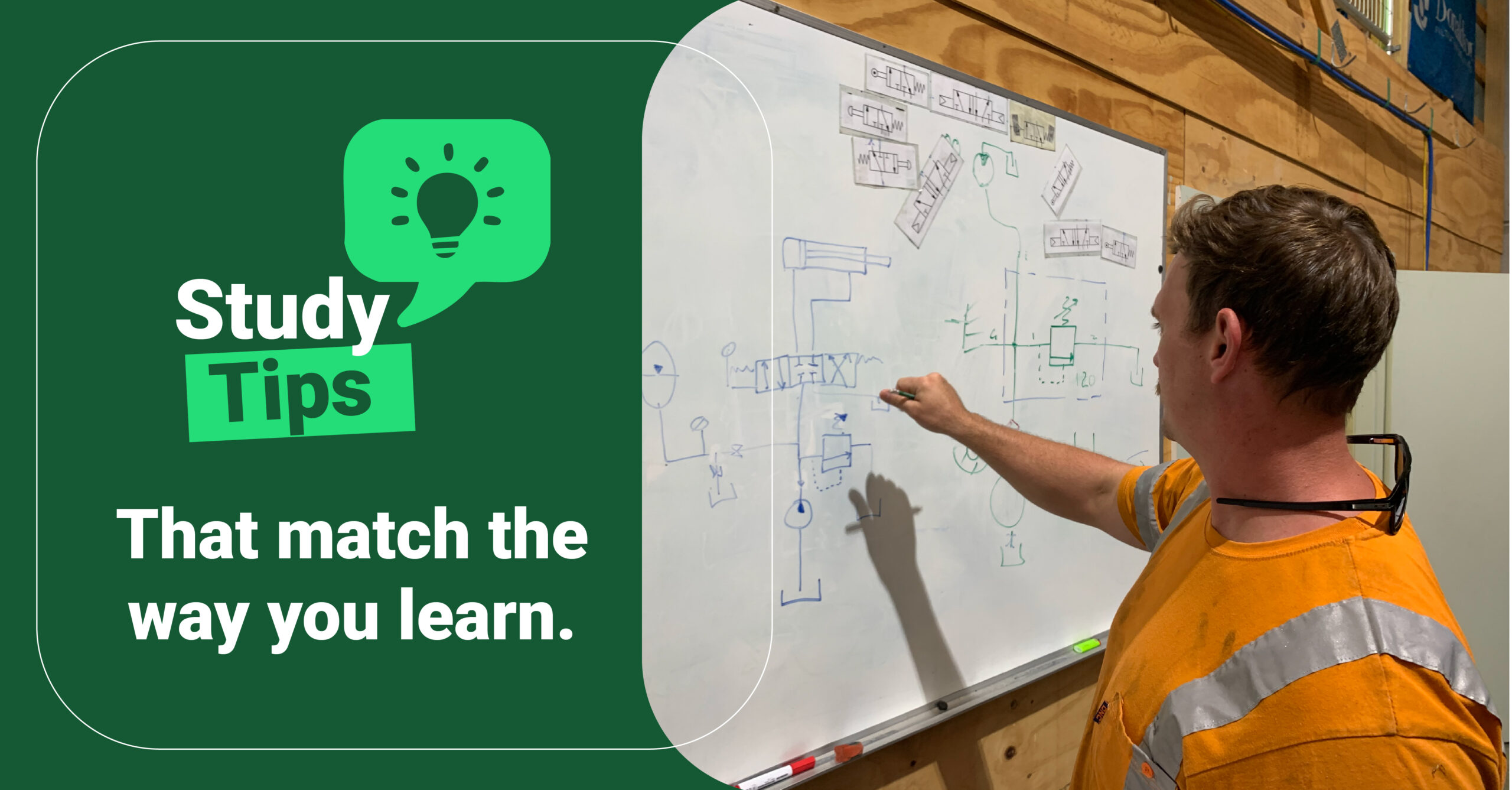
Practical strategies for mastering hydraulics, your way
Let’s be honest, studying hydraulics isn’t always smooth sailing. Between pressure systems, schematics, and components that all sound the same, it can feel like a full-time job on top of your actual full-time job. Add shift work, family life, and fatigue to the mix, and staying focused isn’t easy.
But here’s the good news.
Success in training doesn’t come from studying harder. It comes from studying smarter and that starts with understanding how you learn best.
Just like a fluid power system, everyone works a little differently. So instead of forcing yourself to study one way, it’s worth finding the method that actually clicks with your brain.
Visual Learners: See it to believe it
If you’re someone who remembers what they see, then visual tools will be your best mates. Use textbooks with clear diagrams and draw your own flowcharts or system maps to get a better sense of how components interact. Colour-coding your notes can also help make information easier to recall later. Turning complex ideas into flashcards, sketches or quick infographics is a powerful way to make learning stick.
When you’re stuck on a concept, try sketching it out valves, actuators, circuit paths whatever it is, putting it into a visual form helps bring it to life.
Auditory Learners: Talk it out
If you learn best by hearing or speaking, don’t sit in silence with your notes. Say things out loud. Record yourself explaining a topic, then listen to it during your commute. Join a group discussion or bounce ideas off a mate even talking to yourself in the shed counts. Hearing the words, not just reading them, helps turn information into understanding.
If you’re tackling a complex process, try teaching it to someone else. If you can explain it clearly, you’re on the right track.
Linguistic Learners: Write it down
If words are your thing, lean into them. Rewrite your notes in your own language, not just what’s in the training material. Summarise each topic in a few clear sentences, and use memory tricks like acronyms or rhymes to lock in the technical terms.
Keeping a short study journal or reflection log can also help. You don’t need pages of writing, just a few lines on what you learned, what made sense, and what still needs work. That habit builds clarity and progress over time.
Kinesthetic Learners: Get hands-on
If you learn by doing, then physical practice is where it all makes sense. When you can, get on the tools. Take part in simulations, handle the real components, or even build small models at home. When that’s not possible, using objects to mimic hydraulic systems, just moving things around physically can help you understand the flow and function.
Short, active study bursts work best here. Sitting still for too long might lose you.
That’s where APT’s hands-on workshops make a big difference. You’re not just reading about pumps and valves you’re testing, fault-finding, stripping, and rebuilding them in a real environment. And that’s where the learning really sticks.
The universal truth: repetition and support matter
No matter how you learn, some things are universal. Study in short sessions, around 30 to 45 minutes, then take a break. Don’t just read something once and move on, come back to it, test yourself, and repeat.
Ask questions. Our trainers are here to guide you, and there’s no such thing as a silly question when it comes to safety and understanding.
And finally, track your progress. When you finish a topic, understand a new system, or pass an assessment take a moment to acknowledge it. Those wins build momentum, and momentum builds confidence.
You’ve got this.
This isn’t about going back to school. It’s about building skills that open doors. Whether you’re looking to work safer, get promoted, or take on a new challenge, mastering hydraulics is one of the smartest moves you can make.
At APT, we’ve helped more than 7,000 students succeed in fluid power, many of them working full-time, raising families, or returning to study after years on the job.
You don’t need to be a textbook genius. You just need the right strategy, and the right support.
We’ll make sure you have both.
Contact our team today to find out how you can learn with APT